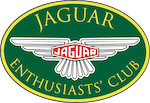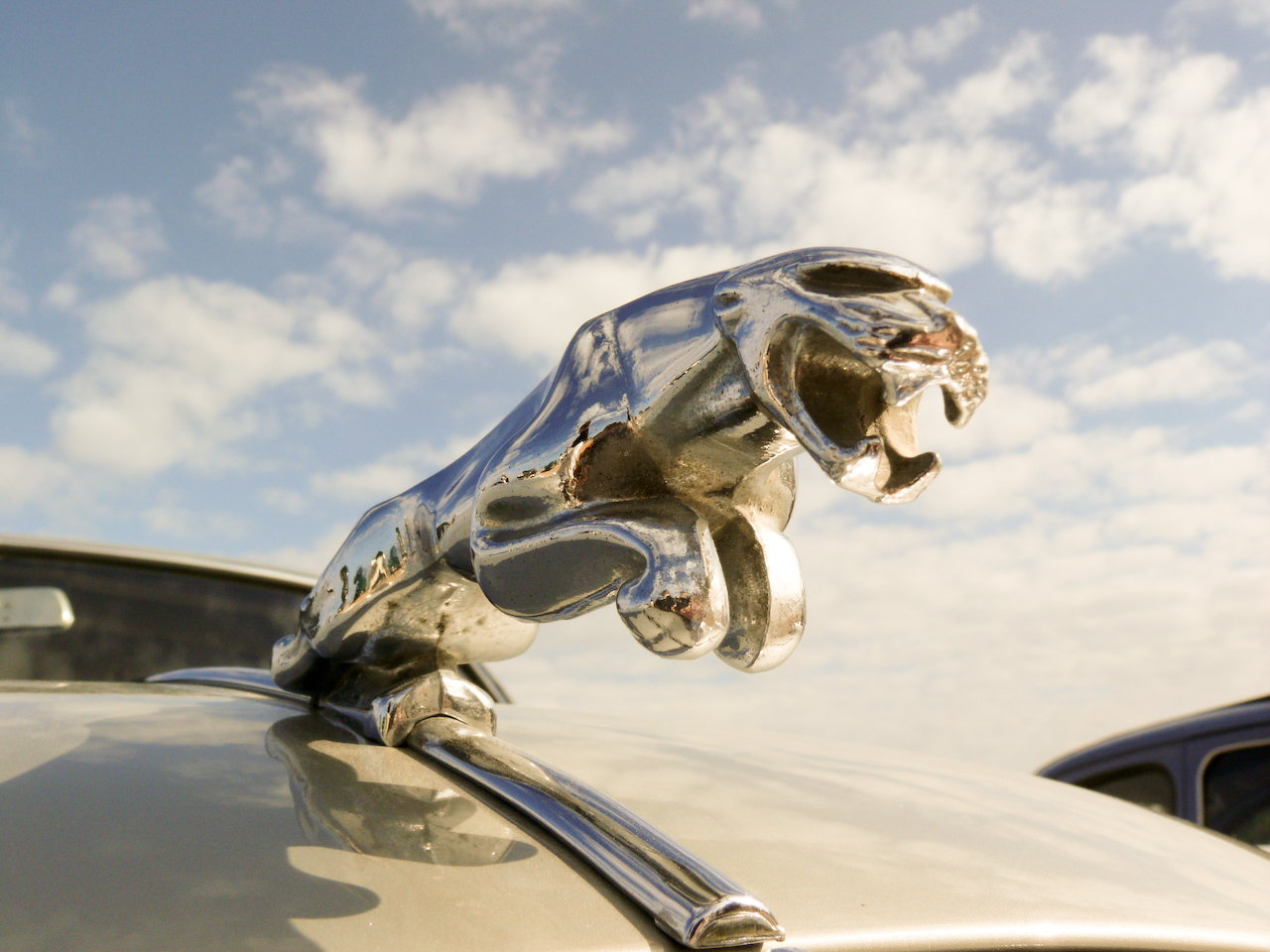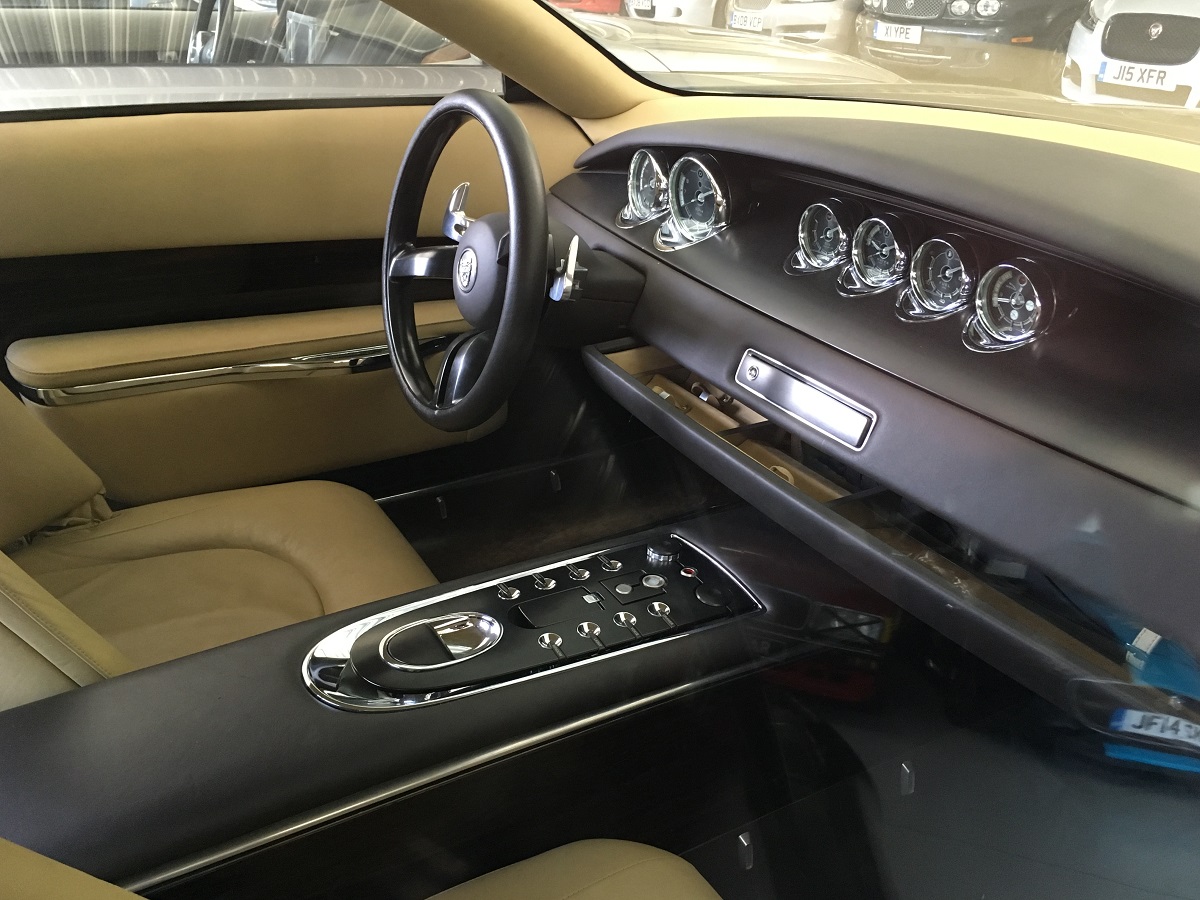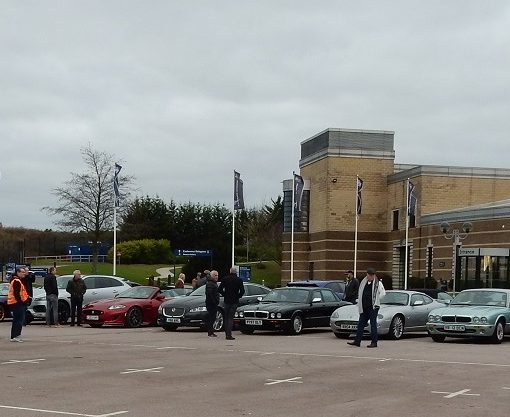A day trip to the Heritage Collection sounded irresistible if, like me, you can’t get enough of car museums. So it was with great anticipation that I set off with our club convoy of Jaguars from Grange Motors in Brentwood in the direction of Warwickshire.
Arriving a couple of hours later, we were greeted by the club displays of early Austins, Ford Mustangs and Volvos. We parked up and formed our own display of the big cat.
Currently being extended to house more vehicles the museum opened in the early 1990’s with the help of the then Rover Group. The idea for this dated back to the 1970’s when British Leyland decided to find out how many old cars it had scattered around in all the facilities which now fell under its umbrella. Leyland Historic Vehicles was duly formed with a display at Donington Park. In 1981 about 100 cars from the collection, now renamed BL Heritage, were sent to Syon Park in London.
In 1983, the British Motor Industry Heritage trust was formed to secure the collection for the Nation. The Jaguar and Daimler vehicles were later separated and managed by the Jaguar Daimler Heritage trust when Ford acquired Jaguar, eventually settling in a new museum in Coventry.
The collection at Gaydon is now over 300 strong and takes in cars from other makers including Rootes Group, Morgan, Lotus and Vauxhall.
Upon arrival we were split into two groups headed up by knowledgeable guides who took us through some of the key exhibits pointing out items of particular interest. We were then left to wander about and view the displays at our leisure. The building is roughly circular on plan and is best viewed starting at the perimeter which forms a “Time Road” starting with the “first” cars, in this case an 1896 Wolseley Autocar, to the Edwardian carriages of Albion, Thorneycroft, Riley, Rover, Austin, Standard and Wolseley. If this era is your bag, then the 1911 Austin 15hp Towncarriage may do it for you. With the brass radiator flat against the the cab bulkhead and no bonnet, it was an ideal city car for its time.
The 1920’s were certainly not roaring here, with a sober line up including a 1923 Austin Chummy, various Morris’s, Wolseleys and Rovers. I found the 1930’s section much better, the most notable highlights being a Standard Speedline and a magnificent 1936 MG SA crammed in towards the outer wall.
You could walk between the cars to see them more easily, although some clearly deserved more space.
Not much from the early 1940’s due to Germany’s World Tour, but examples from the latter half of the decade could be seen around the museum. These were represented by the millionth Austin produced, a 1946 Sixteen signed by all the assembly operatives.
A 1948 Land Rover, a Morris Minor and a Rover P3 75 from the same year were also present. The Rover looked positively pre-war when compared with the then new Minor lowlight. The car has been used in the Miss Marple TV series and is a very early example, probably one of the first thousand to be made. You can tell this from the from the two-part design for the chrome bumper insert to the front and rear. This arose from a very late change to the design. Originally the car was to be four inches narrower, but, late in the day, this was considered to give the car an “unbalanced look”. The four inches were hastily added to its width the most obvious tell-tale being the central raised section of the bonnet, but some outsourced parts had already been manufactured and delivered. Some of these were the chrome bumper inserts which were now too short. The easy solution was to cut them in half and add a central body coloured steel section which can be seen on this exhibit.
The Time Road takes us round to the 1990’s with too many vehicles to mention here. I did like the 1958 MG Magnette ZB with only 6,000 miles on the clock and the lovely Italian influenced design. The cheery Austin (Nash) Metropolitan is always a joy. The display comes to an end with, of all things, a Toyota Carina, the first one to be assembled in the UK, and a red Mini Cooper, the very last of the original shape to be made.
There are lots of things to see, so what caught my eye? Well, the 1948 Land Rover shown turns out to be THE very first production model off the line, fondly named as Huey because of its registration number. It was spotted on a farm with a tree growing through it. What are the odds against that? I am told that there are still two parts on the latest Land Rover that are interchangeable with the original – a hood clip and a chassis box section.
The Leyland Straight Eight from 1927 must get a mention, if only for its impracticability as a road car. Who would buy a car that you could hardly get into and had the turning circle of the QE2?
The Geneva Show car Aston Martin Vanquish V12, a DB7 Zagato and the DB2 owned by Stirling Moss made up an impressive trio of Astons. A splendid Alvis TE21 from 1965 and a decade older Armstrong Siddeley 346 Sapphire were good examples of gentlemens’ carriages with a bit of class. A Coombs Mk 2, a Formula 1 XJ40 tender car, a competition XK120 and a stunning E Type Roaster made up some of the Jags present. After so many Wolseleys, it would be remiss of me not to mention the 1975 2200 which was the last “wedge” and the last ever Wolseley to be produced.
Rovers abounded, many being either the first or last of the genre. I particularly liked the Michael Edwardes’ own Rover SD1 Estate car. A good one off conversion only lacking some detail finish to the tailgate. It should have been produced as an alternative to those Volvos and Mercedes wagons. The final 2005 Rover 75 CDT, the last ever Rover, was on display. Hand built over a three month period whilst MG Rover was in administration, it contrasted with the 2.5 Connoisseur which was the first off the line in the heady new beginning in 1999. So sad.
Cars from the movies are always worth a look and the ones shown here did not disappoint. We had Judge Dredd’s Land Rover based “thing”, Lady Penelope’s pink Rolls Royce from Thunderbirds, the battered Defender as driven by Miss Moneypenny (Naomi Harris) in Skyfall and the ubiquitous DeLorean from Back to The Future complete with its “Mr Fusion” power generator and Flux Capacitor – all that just to do 88 mph! This one was signed on the dashboard by Christopher Lloyd himself.
Several prototypes and styling exercises/concepts were displayed, the most famous being the Rover turbine cars. The fourth iteration of these showcased the forthcoming new P6 saloon – the “2000”. MG had the 1985 EX-E a large open top concept which, I think, was based on a TVR. Probably the best concept on show was the 2004 Range Stormer which eventually paved the way for the Range Rover Sport. Whilst, thankfully, most of the others did not see the light of day, this one was certainly on the money.
Following a very acceptable lunch in the museum café, we ended our tour in the Hull Collection sited on the mezzanine level. Now here were some very well prepared cars, their quality enhanced by their rarity and provenance. There were sixteen cars from that vast collection on display, ranging from a streamlined art deco 1934 SS 1 Airline to a 1973 Rolls Silver Shadow, Series 1. Jaguar were there with an early alloy-bodied XK120, a 3.8 Mk 2 and the only surviving Coombs tuned E Type. Other notables included a 1955 Bentley Continental by Mulliner (once the fastest four seater in the world), Lord Mountbatten`s Morris Mini Traveller, a Humber Hawk Estate that had something to do with the Profumo Scandal (well, they would say that wouldn’t they?), a Cadillac powered Allard “Woodie” Estate, (I prefer the 1940’s Fords), a 1954 Swallow Doretti made in Walsall despite its exotic nameplate, an Abbott bodied Ford Consul Mk 1 Estate and a 1965 Alvis Super Graber Cabriolet. This being a one-off made by Hermann Graber the Swiss Carrosserie showing the vertical headlamp cues that were to be incorporated into the TE21.
Well, that’s it from the day. A good venue to visit which will benefit from the planned extension. Seeing everything from the oldest surviving Rover of 1904 to the last Rover 75 of 2005 left me with a feeling that the story told was one of ultimate failure and “what might have been, if only”. On the other hand, it was great nostalgia and a celebration of some of the great British marques and cars from all points in the motoring spectrum, particularly BMC, once one of the largest vehicle manufacturers on the planet. And on that bombshell . . .
Neil Shanley




